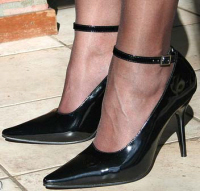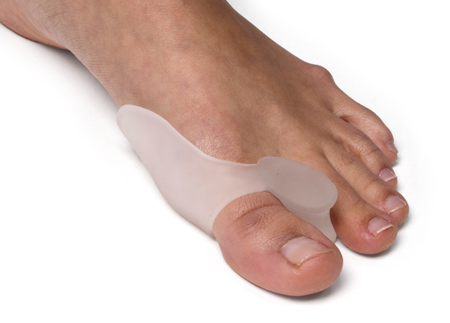Causes Of Bunions
Overview
 A bunion (hallux valgus) is a deformity of the base joint of the big toe. The cause is not clear in many cases. The deformity may cause the foot to rub on shoes, which may cause inflammation and pain. Good footwear is often all that is needed to ease symptoms. An operation to correct the deformity is an option if good footwear does not ease symptoms.
A bunion (hallux valgus) is a deformity of the base joint of the big toe. The cause is not clear in many cases. The deformity may cause the foot to rub on shoes, which may cause inflammation and pain. Good footwear is often all that is needed to ease symptoms. An operation to correct the deformity is an option if good footwear does not ease symptoms.
Causes
Although they may develop on the fifth (little) toe, bunions usually occur at the base of the big toe. Bunions are often caused by incorrect foot mechanics. The foot may flatten too much, forcing the toe joint to move beyond normal range. In some cases, joint damage caused by arhritis or an injury produces a bunion. And some people are simply born ith extra bone near a toe joint. If you're at risk for developing a bunion, wearing high-heeled or poorly fitting shoes make the problem worse. As new bone grows, the joint enlarges. This stretches the joint's outer covering. Force created by the stretching pushes the big toe toward the smaller ones. Eventually, the inside tendons tighten, pulling the big toe farther out of alignment.
Symptoms
Corns and calluses may occur on the soles of the feet, in between toes and on the bunion joint. Stiffness can occur at the big toe due to secondary arthritis, this is known as Hallux Rigidus. Other foot conditions can occur such as in growing toenails and in severe cases the bunion joint may have a fluid filled sack called a bursitis. This can be very painful and can become infected.
Diagnosis
Although bunions are usually obvious from the pain and unusual shape of the toe, further investigation is often advisable. Your doctor will usually send you for X-rays to determine the extent of the deformity. Blood tests may be advised to see if some type of arthritis could be causing the pain. Based on this evaluation, your doctor can determine whether you need orthopaedic shoes, medication, surgery or other treatment.
Non Surgical Treatment
There are many treatment options for bunions and they will vary with the type and severity of each bunion and will also depend on what is causing the symptoms. Bunions are almost always progressive and tend to get larger and more painful with time, how fast this happens may be a function of the fit of the footwear. The initial goal of treatment options is to relieve pressure on the bunion and any symptoms that may be present and to halt or slow the progression of the joint deformity. There is no effective may be "get rid off" a bunion without surgery. There are a number of things that individuals and Podiatrists can do to help the symptoms and slow (if not halt) progression. 
Surgical Treatment
If your bunion is symptomatic and causing you persisting and troublesome symptoms then surgery should be considered. There is no correct amount of pain or inconvenience which a bunion may cause which warrants surgery. Symptoms which a bunion causes are generally subjective, and what is a problem in one person?s view will not be a problem in another's. For bunion surgery to be successful (correcting the deformity and losing the symptoms) the mechanical factors driving the deformity should be overcome. Bunion surgery should replace the 1st metatarsal closer to the 2nd thus reducing the width of the foot, and also realigning the tendons and reducing their deforming forces. These principals of bunion surgery are well demonstrated by the following x-rays which shows how a Scarf osteotomy has achieved this aim.
Prevention
If the diagnosis is made early on, such as in preadolescence, bunion development can be slowed and in some cases arrested with the proper supportive shoe gear and custom functional shoe inserts (orthotics). Avoidance of certain athletic activities with improper shoe fit and toe pressure can prevent the symptoms that occur with bunions.